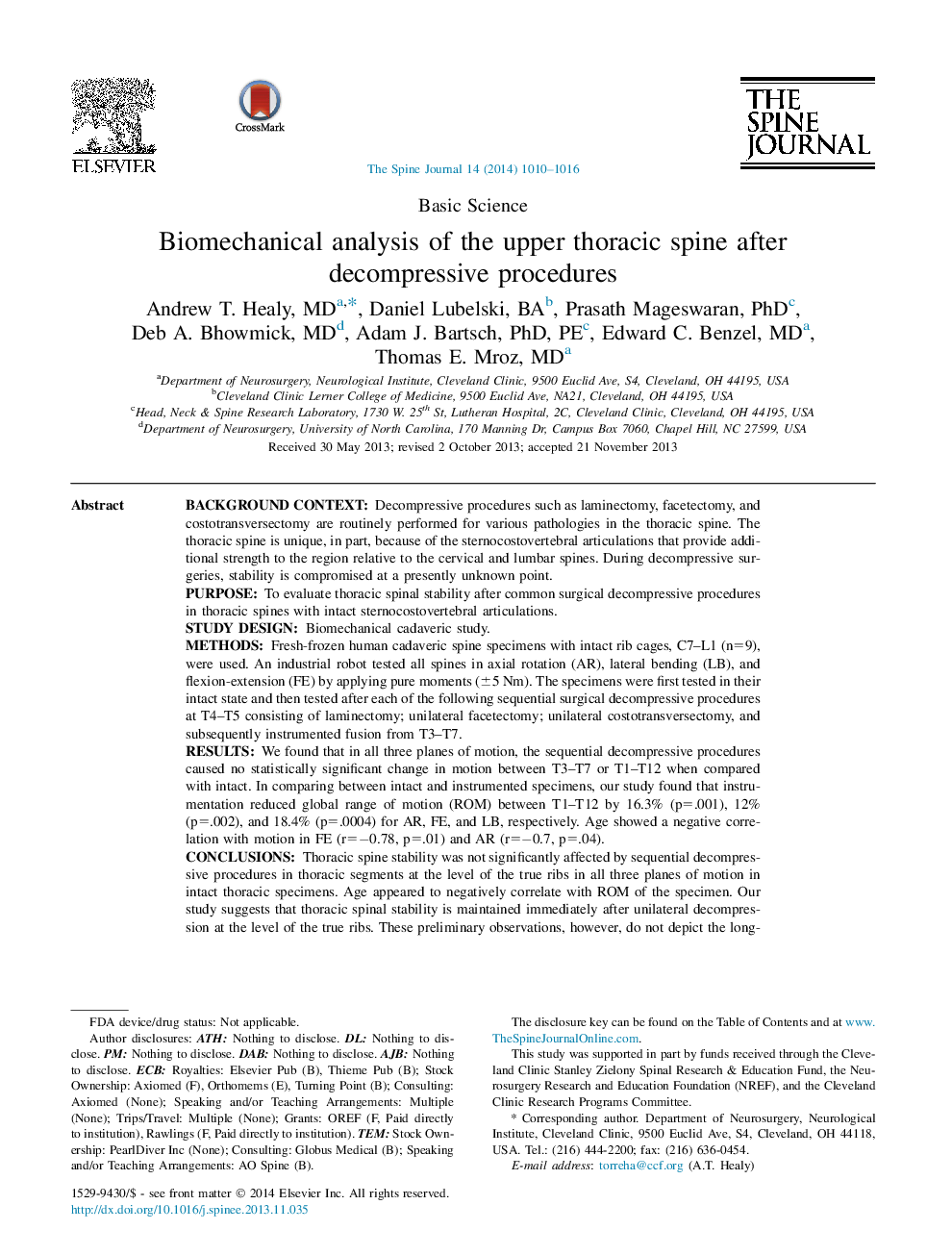| کد مقاله | کد نشریه | سال انتشار | مقاله انگلیسی | نسخه تمام متن |
|---|---|---|---|---|
| 4097779 | 1268598 | 2014 | 7 صفحه PDF | دانلود رایگان |
Background contextDecompressive procedures such as laminectomy, facetectomy, and costotransversectomy are routinely performed for various pathologies in the thoracic spine. The thoracic spine is unique, in part, because of the sternocostovertebral articulations that provide additional strength to the region relative to the cervical and lumbar spines. During decompressive surgeries, stability is compromised at a presently unknown point.PurposeTo evaluate thoracic spinal stability after common surgical decompressive procedures in thoracic spines with intact sternocostovertebral articulations.Study designBiomechanical cadaveric study.MethodsFresh-frozen human cadaveric spine specimens with intact rib cages, C7–L1 (n=9), were used. An industrial robot tested all spines in axial rotation (AR), lateral bending (LB), and flexion-extension (FE) by applying pure moments (±5 Nm). The specimens were first tested in their intact state and then tested after each of the following sequential surgical decompressive procedures at T4–T5 consisting of laminectomy; unilateral facetectomy; unilateral costotransversectomy, and subsequently instrumented fusion from T3–T7.ResultsWe found that in all three planes of motion, the sequential decompressive procedures caused no statistically significant change in motion between T3–T7 or T1–T12 when compared with intact. In comparing between intact and instrumented specimens, our study found that instrumentation reduced global range of motion (ROM) between T1–T12 by 16.3% (p=.001), 12% (p=.002), and 18.4% (p=.0004) for AR, FE, and LB, respectively. Age showed a negative correlation with motion in FE (r=−0.78, p=.01) and AR (r=−0.7, p=.04).ConclusionsThoracic spine stability was not significantly affected by sequential decompressive procedures in thoracic segments at the level of the true ribs in all three planes of motion in intact thoracic specimens. Age appeared to negatively correlate with ROM of the specimen. Our study suggests that thoracic spinal stability is maintained immediately after unilateral decompression at the level of the true ribs. These preliminary observations, however, do not depict the long-term sequelae of such procedures and warrant further investigation.
Journal: The Spine Journal - Volume 14, Issue 6, 1 June 2014, Pages 1010–1016
